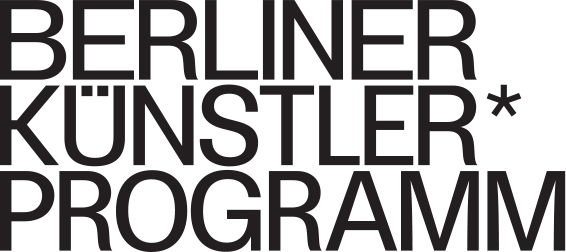Canada / Lebanon, Literature, 2011
Rawi
Hage
Rawi Hage, born in 1964 in Beirut, is a child of the war. He still remembers his mother pushing him under the table during one of the countless bomb attacks on East Beirut’s Christian sector and learning how to behave when bullets, grenades, and mines posed an ever-present threat, when sources for water dried up, and death dictated daily life.
At the age of eighteen, Hage immigrated to the United States. In New York, after Arabic and French, he adopted his third language, which became the one he would write in: English, the instrument for global understanding and since Conrad and Nabokov at the latest, a continually renewed form of expression for a great many literary figures without a homeland. However, Hage had no intention of becoming a writer at first. In 1991, after keeping his head above water by working eight years as a salesman and warehouse worker, and reading Dostoyevsky on the side, he traveled to Canada after his visa expired. In Montreal, he studied photography and a few years later began exhibiting his images. He discovered writing by coincidence – “I’m an accidental writer” – while touring Canada as a commissioned photographer required to submit written documentation of his work. Not being a friend of “bureaucracy,” instead of reports in the form of sober accounts, he turned in purely fictionalized short stories which instantly had a stronger appeal. Then the photographer wrote more stories. Some were printed in literary magazines and, bit by bit, one developed into a novel: Rawi Hage’s internationally acclaimed, literary debut, De Niro’s Game (2006), which appeared in German under the title Als ob es kein Morgen gäbe (Like There’s No Tomorrow), translated by writer and literary scholar Gregor Hens, who captures a strong sense of the original text’s rapidly-paced language and overriding visual imagery.
With this first novel, an unknown writer, a refugee writing in a foreign language, racked up the 2008 International IMPAC DUBLIN Literary Award (with 100,000 euro in prize money) and eliminated from the competition established competitors such as Philip Roth, Thomas Pynchon, and renowned Canadian writer Margaret Atwood. This sensation made headlines and led to the novel being translated into twenty languages. The first sentence of De Niro’s Game leads directly into Beirut of the 1980s: “Ten thousand bombs had landed, and I was waiting for George.” This is the story of two friends, Bassam and George (nicknamed “De Niro”), barely adults and already better acquainted with the possibility of dying than with considering any type of future. Bassam, the first-person narrator, dreams of fleeing to Rome – for him the Promised Land flaunted on the poster in his cluttered teenager’s room; he wants to escape the hailstorm of bombs and the streams of blood watering the streets of Beirut on a daily basis. Unfortunately, his dream calls for the kind of money he could never earn doing odd jobs as a dockworker, and so, together with his old friend, he takes part in shady deals. But when De Niro lets himself be hired by the Christian militia in control of their sector of the city, the two friends gradually become deadly enemies. By the time Bassam finally manages to escape on an Egyptian ship headed to Marseille, everything dearest to him has been lost: his father, his mother, and his best friend. He becomes the victim of grueling torture and a culprit himself. The only thing in his luggage is a gun.
For this drama of war and betrayal, Hage invents a unique language, a blend of numerous influences likewise entirely unprecedented and strongly characterized by visual references. Religious symbolism and Arabic poetry pervade the use of metaphors, and masterpieces of American cinema – like Cimino’s Vietnam film The Deer Hunter – help shape the motives, perspectives and narrative structure. Ultimately, this prompts a deeply impressed Alex Rühle to write in the German newspaper Die Süddeutsche Zeitung: Hage assembles his (…) novel in quick scenes, almost as if it were a screenplay. At the same time, his style is highly poetic, and it’s strange how he repeatedly pulls this off: the merging of tough concise speech with the poetic, as though we are listening to Clint Eastwood quote Old Testament hymns through clamped-together jaws.” Although much of what Hage experienced and heard finds its way into the novel, his book is not autobiographical. The author speaks of a “collective biography, the history of a community whose members wage war among themselves.” Indeed, the novel is about much more than a war, and the storyteller never overlooks the country’s history or its inhabitants stemming from every possible religion and persuasion, and who fled from other similarly horrific wars in the past: “From inside the passport photo I smiled back at an Armenian photographer, looked into the lens of his beloved medium format camera carried out of Russia and through the Syrian desert by his father – back then – when young Turks slaughtered his relatives before their own front doors, shot at the highest crosses, killed all the goats, and sang songs praising the modern age.”
Empathy of this kind is also found in Hage’s second novel, Cockroach, which takes place in Montreal’s exile milieu and makes painfully clear that a person might physically escape the war, but never without an unscathed soul. While an unbearable heat dominates the Beirut of the first novel, in Montreal an incredible cold and darkness reign. And while Bassam’s gaze is repeatedly directed skyward, the gaze of this novel’s unnamed narrator remains riveted to the floor; it penetrates underground to investigate Montreal’s canalization – this is the gaze of the cockroach the novel is named after, the gaze of vermin not unlike the penniless refugees on the fringes of Canada’s affluent society, and the representatives of the only species destined to survive the end of the world, that is, if one believes the Jehovah’s Witnesses who makes a short but unforgettable appearance at the beginning of the novel. The writer chooses a daring perspective here. His narrator – an unsuccessful, would-be suicide victim forced to undergo therapy and questioned by a narrow-minded psychologist – inspires everything but sympathy. Yet the displayed ability to empathize and the novel’s linguistic force once again prove that the 2008 IMPAC jury made the right decision: Rawi Hage writes, in every respect, world literature.
De Niro’s Game. Novel. Translated from English by Gregor Hens. Published by DuMont Buchverlag, Cologne, 2008
Cockroach. Novel. Translated from English by Gregor Hens. Published by Piper Verlag, Munich, 2010


